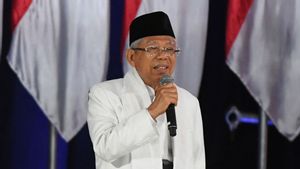Minister of Finance (Menkeu) Sri Mulyani said that throughout 2022 Indonesia had succeeded in restoring the economy better after the intense pressure caused by the COVID-19 pandemic in recent years.
According to the Minister of Finance, this is reflected in the growth in all regions of the archipelago which recorded positive results. Sumatra, for example, grew 4.71 percent until the end of the third quarter of 2022. Then Java with 5.76 percent, Kalimantan 5.67 percent, Sulawesi 8.24 percent, and Papua and Maluku with 7.51 percent.
The momentum of strong recovery is clearly visible in the Bali and Nusantara areas with a book on economic growth of 6.69 percent. In fact, this region was previously still contracting due to the tourism sector which has not improved.
"The growth in all areas is positive and quite high. This is an extraordinary thing," he said through a virtual channel when visiting STKIP PGRI Sumenep, Thursday, February 2.
The Minister of Finance explained what happened in Indonesia as something unusual (anomalously).
The reason is, the revival of the Indonesian economy actually contradicts global conditions that are experiencing a deterioration in the situation.
"Even though the world is weakening again. So when the IMF said that the world would be pitch black, Indonesia was actually in a position where its recovery had increased very rapidly," he stressed.
The Minister of Finance noted that global economic growth in 2022 is estimated to be only around 2.9 percent. This figure is down significantly from 2021 which was 6.2 percent.
This year will weaken again (from 2022). This is what we must be aware of after the pandemic, which is a significant weakening," he said.
The government itself is optimistic that economic growth in 2022 can be in the range of 5.2 percent to 5.3 percent in full years. Meanwhile, for 2023, efforts are made to remain at the psychological level of 5 percent with a conservative estimate of 4.5 percent.
According to VOI records, there are at least five challenges to watch out for this year's period. First, increasing geopolitical tension. Second, global inflation is not yet completely tame and returns to normal levels.
Third, the interest rate is still high. Fourth, the economic decline in developed countries, such as America, China, and the European region. And the fifth is fiscal policy which is getting narrower because it has been widened during the early days of the COVID-19 pandemic.
Even so, there are also signals that can be hope for 2023, such as starting to slow down commodity prices, China's economic opening as a continuation of the zero covid policy, and strengthening the recovery of emerging countries in Asia (India, ASEAN).
The English, Chinese, Japanese, Arabic, and French versions are automatically generated by the AI. So there may still be inaccuracies in translating, please always see Indonesian as our main language. (system supported by DigitalSiber.id)









